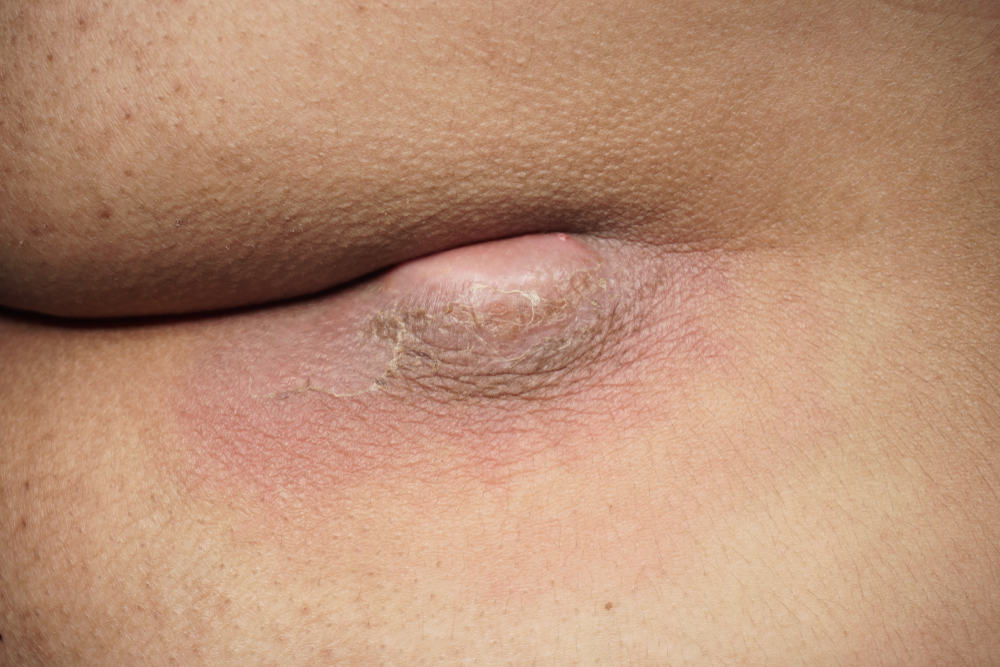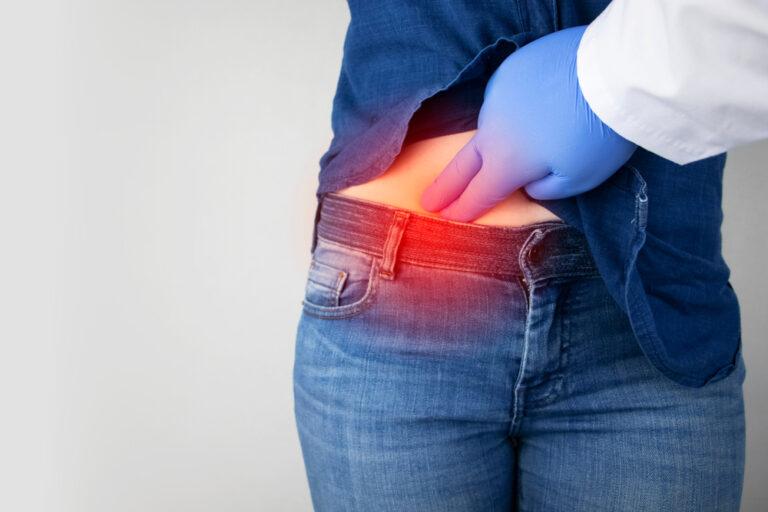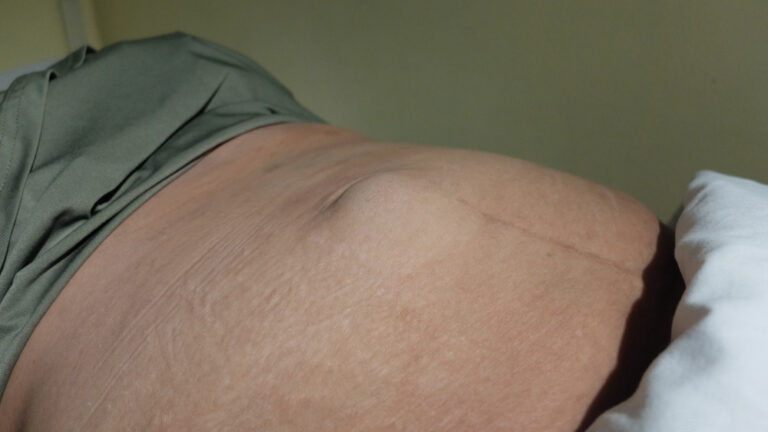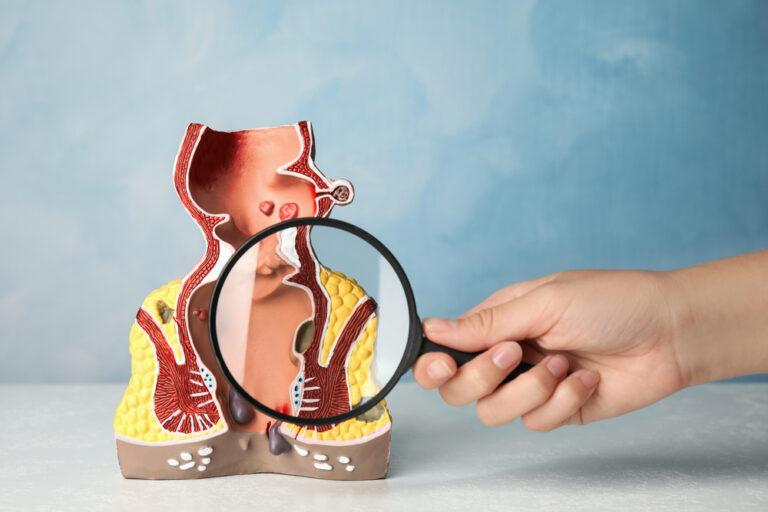What Is Pilonidal Sinus?
A pilonidal sinus is a small hole or tunnel that forms under the skin near the top of the buttocks (in the cleft area).
It often contains hair, pus, and debris, leading to pain, swelling, and infection.
When the sinus becomes infected, it may form an abscess that discharges pus or blood, producing a foul smell.
This condition is more common in young adults and people who sit for long periods, such as drivers, students, or office workers.
Causes of Pilonidal Sinus
The exact cause isn’t always clear, but the main contributing factors include:
- Ingrown hair penetrating into the skin
- Prolonged sitting or friction in the buttock area
- Poor hygiene or excessive sweating
- Obesity or thick body hair
- Family history of pilonidal disease
When hair follicles break and the body treats them as a foreign substance, a sinus or cyst develops, which can later get infected.
Common Symptoms
- Pain or swelling near the tailbone (lower back)
- Redness and tenderness in the affected area
- Pus or blood discharge with foul odor
- Fever (if abscess develops)
- Difficulty in sitting or walking comfortably
- Recurrent abscess formation
Investigations for Pilonidal Sinus
A clinical examination by a surgeon is usually sufficient to diagnose a pilonidal sinus.
However, in complex or recurrent cases, further imaging may be needed.
1. Physical Examination
The doctor visually inspects the area to check for small openings, redness, or discharge.
2. Ultrasound or MRI Scan
Used to identify multiple tracts or deeper sinus extensions before surgery.
3. Culture and Sensitivity Test
If infection is present, pus may be tested to identify bacteria and guide antibiotic therapy.
Treatment Options for Pilonidal Sinus
The treatment depends on the stage of the disease — whether it’s acute (infected abscess) or chronic (persistent sinus tract).
1. Conservative Treatment
For mild or early cases:
- Proper hygiene and hair removal in the area
- Warm compresses or sitz baths
- Antibiotics to control infection
However, these only provide temporary relief and do not cure the sinus permanently.
2. Surgical Treatments
When the sinus is persistent or recurrent, surgery is required to remove the tract.
a. Incision and Drainage
Performed for an infected abscess — pus is drained, but the sinus often recurs.
b. Excision and Primary Closure
The sinus tract is surgically removed, and the wound is stitched.
Although effective, it may cause pain, bleeding, anda long healing time.
c. Open Surgery (Excision with Secondary Healing)
The wound is left open to heal naturally — reduces recurrence but takes weeks to months to heal completely.
Best Treatment – Laser Surgery for Pilonidal Sinus
The most advanced and effective method for treating pilonidal sinus is Laser Pilonidal Sinus Surgery (Laser Ablation or SiLaC – Sinus Laser Closure).
It is a minimally invasive, bloodless, and painless procedure with a very low recurrence rate.
During the procedure, a fine laser fiber is inserted into the sinus tract. The laser energy destroys the infected tissue, seals the tract, and promotes rapid healing — all without large cuts or stitches.
Advantages of Laser Treatment
- Painless, bloodless, and scar-free procedure
- No major cuts or stitches
- Day-care surgery – discharge on the same day
- Quick recovery – resume normal life within 24–48 hours
- Minimal postoperative pain
- No dressing or daily wound cleaning required
- Extremely low recurrence rate
- Better cosmetic outcome
Why Choose Laser Surgery for Pilonidal Sinus?
Laser surgery offers a modern, safe, and patient-friendly alternative to traditional open surgery.
It provides:
- Faster healing
- Shorter hospital stay
- Minimal tissue damage
- Long-term cure
Laser Pilonidal Sinus Surgery (SiLaC) is now considered the gold standard treatment worldwide for patients seeking permanent and comfortable relief.
Conclusion
A pilonidal sinus is a painful and often recurring condition that cannot be cured with medicines alone.
Among all available treatments, Laser Surgery stands out as the most effective, painless, and permanent solution.
If you are suffering from pilonidal sinus, don’t delay — consult an experienced laser proctologist for evaluation and undergo laser treatment for quick recovery, minimal discomfort, and long-lasting relief.







